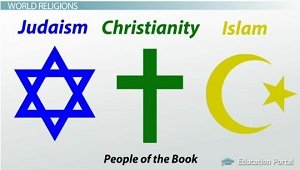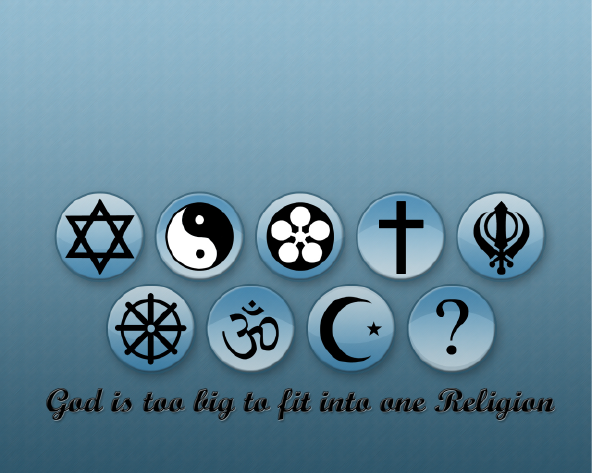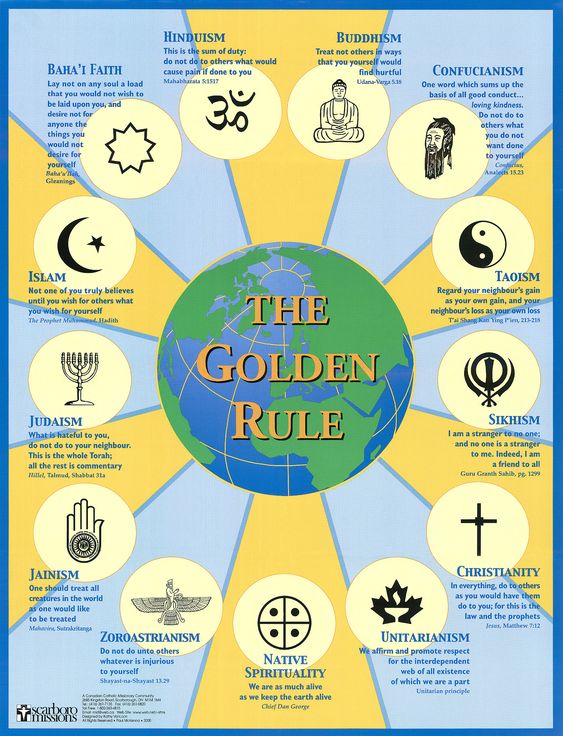We are going to study five of the largest and most internationally widespread religious movements. We are going to learn about Hinduism, Christianity, Islam, Judaism, and Sikhism because there are many similarities between these 5 religions. Take a look at the map of world religions here.
Introduction
There are an estimated 10,000 distinct religions worldwide, but about 84% of the world’s population is affiliated with one of the five largest religions. The ‘big five’ differs depending on where you live in the world.
Religious practices may include rituals, sermons, deities, sacrifices, festivals, feasts, trances, initiations, funerals, marriage, meditation, prayer, music, art, and dance. Religions have sacred histories which may be preserved in sacred scriptures, and symbols and holy places Religions aim mostly to give a meaning to life.
Religions explain the origin of life, the universe, and other things.
Which Hindu deity are you most like?
For Hindus, there is a single, universal God known as the Supreme Being or Brahman but Hinduism also has numerous gods and goddesses, known as deva and devi, (deities) who represent one or more of Brahman's aspects.
Each has their own unique characteristics. Do you share any characteristics with the deities?
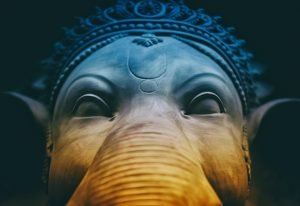
Session One
Christianity Fact File.
Founded in.
1st Century A.D.
Important Figure.
Jesus of Nazareth
Holy Texts.
The Bible
Number of followers.
2.4 billion or 33% of the global population.
Mostly found in.
North and South America, Africa, Europe.
Basic core beliefs.
- Jesus is the Son of God and is equal with God.
- Jesus was born of a virgin.
- Jesus lived a perfect, sinless life.
- Jesus was crucified to pay the penalty for our sins.
- Jesus rose from the dead.
- We are saved by the grace of God.
Imagery.
Chinese Christian Art by He Qi.
Symbols.
Cross, fish. Look for them here.
Other.
Session Two 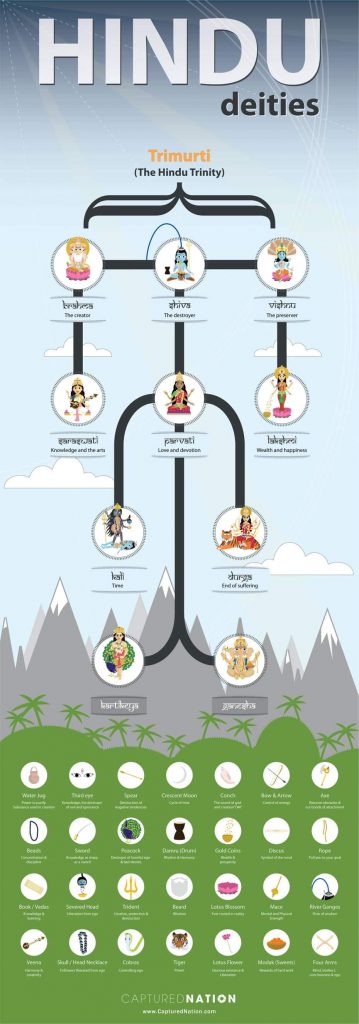
Hinduism Fact File.
Founded in.
Unknown – Krishna was born around 3000 BC.
Important Figure.
Krishna.
Holy Texts.
Vedas (Samhitas, the Brahmanas, the Aranyakas, and the early Upanishads)
Number of followers.
1.1 billion or 15–16% of world’s population.
Mostly found in.
India, China, and Japan.
Basic core beliefs.
-
Truth is eternal.
-
Brahman (one true God) is Truth and Reality.
-
The Vedas are the ultimate authority.
Everyone should strive to achieve dharma (righteousness and morality).
-
Individual souls are immortal.
-
The goal of the individual soul is moksha (release from the cycle of birth and death).
Imagery.
Indian Hindu Art by Kailash Raj.
Symbols.
Om, Swastika. Look for them here.
Other.
Session Three 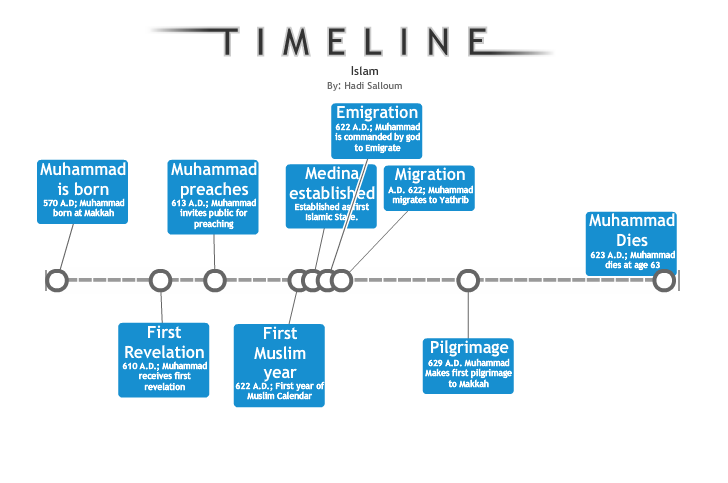
Islam Fact File.
Founded in.
7th century.
Important Figure.
Muhammed.
Holy Texts.
Qu’ran.
Number of followers.
1.66 billion or 22% of world’s population.
Mostly found in.
Africa, South Asia, Indonesia.
Basic core beliefs – The Five Pillars of Islam.
-
Declaration of Faith: To convert to the faith of Islam, a person has to say this statement.
-
Daily Prayer: Muslims perform five formal prayers a day.
-
Zakah: A type of charity.
-
Fast of Ramadan: Once each year, Muslims are commanded to fast for an entire month from dawn to sunset.
-
The Hajj: once-in-a-lifetime pilgrimage to the sacred sites in Mecca, in present-day Saudi Arabia.
Imagery.
Symbols.
Star and crescent. Look for it here.
Other.
Session Four 
Judaism Fact File.
Founded in.
Around 2000 B.C.
Important Figures.
Abraham, Moses.
Holy Texts.
Torah.
Number of followers.
15 million or 0.2% of world’s population.
Mostly found in.
Israel, USA.
Basic core beliefs – The Thirteen Principles of Faith.
- God exists
- God is one and unique
- God is incorporeal (no body)
- God is eternal
- Prayer is to be directed to God alone and to no other
- The words of the prophets are true
- Moses’ prophecies are true, and Moses was the greatest of the prophets
- The Written Torah (first 5 books of the Bible) and Oral Torah (teachings now contained in the Talmud and other writings) were given to Moses
- There will be no other Torah
- God knows the thoughts and deeds of men
- God will reward the good and punish the wicked
- The Messiah will come
- The dead will be resurrected
Imagery.
Symbols.
Star of David. Look for it here.
Other.
Theatrical performance of Jewish style dances.
Session Five 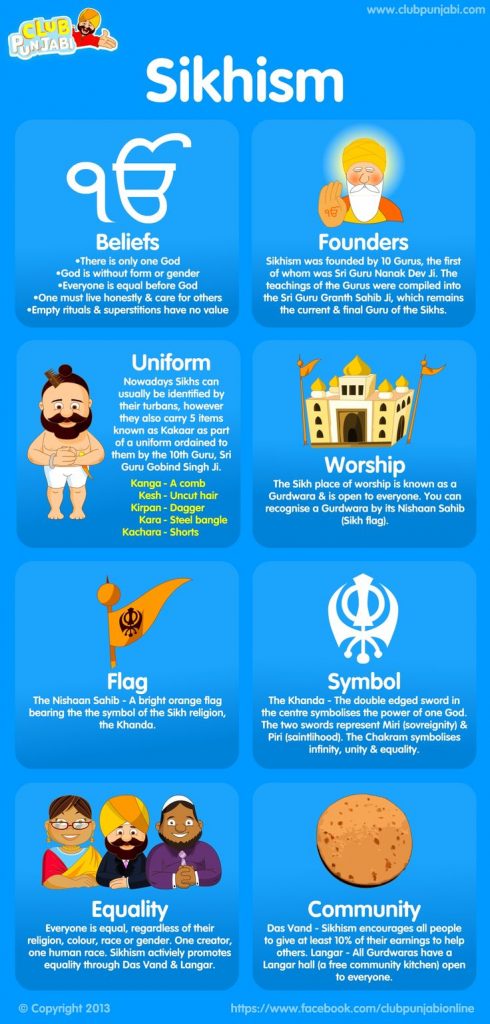
Sikhism Fact File.
Founded in.
15th century.
The Ten Gurus of Sikh History
- First Guru Nanak Dev
- Second Guru Angad Dev
- Third Guru Amar Das
- Fourth Guru Raam Das
- Fifth Guru Arjun Dev
- Sixth Guru Har Govind
- Seventh Guru Har Rai
- Eighth Guru Har Krishan
- Ninth Guru Teg Bahadar
- Tenth Guru Gobind Singh
Holy Texts.
Gurū Granth Sāhib (Ādi Granth).
Number of followers.
20 million or 0.2% of world’s population.
Mostly found in.
Punjab, India
Basic core beliefs – The Ten Principles.
- Worship One God
- Treat Everyone Equally
- Live By the Three Primary Principles
- Be always absorbed in meditation and prayer.
- Make an honest income by honorable methods.
- Share earnings and selflessly serve others.
- Avoid the Five Sins of Ego
- Pride
- Lust
- Greed
- Anger
- Attachment
- Become Baptized
- Keep the Code of Honor
- Wear the Five Articles of Faith
- Follow the Four Commandments
- Recite the Five Daily Prayers
- Take Part in Fellowship
Imagery.
Symbols.
Khanda. Look for it here.
Other.
Extension
Make a poster to show the similarities between any of the major religions. However you want to do it.
Some ideas:
- One God (Christianity, Judaism, Sikhism, Hinduism, Islam).
- Religious buildings (Christianity, Judaism, Sikhism, Hinduism, Islam).
- Jesus (Christians and Muslims).
- Divali (Hindus & Sikhs).
- Reincarnation (Christianity, Judaism, Sikhism, Hinduism, Islam).
- The old Testament of the Bible (Christianity, Judaism, Islam).

